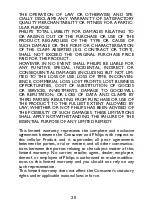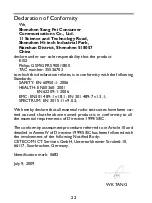
12
Precautions
Radio Waves
Your cellular mobile phone is a low power radio transmit-
ter and receiver. When it is operating, it sends and re-
ceives radio waves. The radio waves carry your voice or
data signal to a base station that is connected to the tele-
phone network. The network controls the power at
which the phone transmits.
Your phone transmits/receives radio waves in the GSM frequency
(900 / 1800 MHz).
The GSM network controls transmission power (0.01 to 2 watts).
Your phone complies with all relevant safety standards.
The CE mark on your phone shows compliancy with European
electromagnetic compatibility (Ref. 89/336/EEC) and low voltage
directives (Ref. 73/23/EEC).
Your cellular mobile phone is your responsibility. To avoid damage
to yourself, to others or to the phone itself, read and follow all the
safety instructions and make them known to anyone borrowing
your phone. Furthermore to prevent unauthorised use of your
phone:
Keep your phone in a safe place and keep it out of small
children's reach.
Avoid writing down your PIN code. Try to remember it
instead.
Switch off the phone and remove the battery if you are going to
leave it unused for a long time.
Change your PIN code after purchasing the phone and to activate
call restriction options.
The design of your phone complies with all applicable laws
and regulations. However your phone may cause interfer-
ence with other electronic devices. Consequently you
should follow all
local recommendations
and regula-
tions
when using your cellular phone both at home and
when away.
Regulations on the use of cellular phones in ve-
hicles and aircraft are particularly stringent
.
Public concern has been focused for some time on the possible
health risks for users of cellular phones. The current research on








































